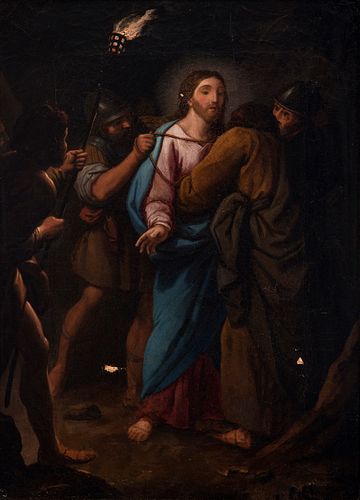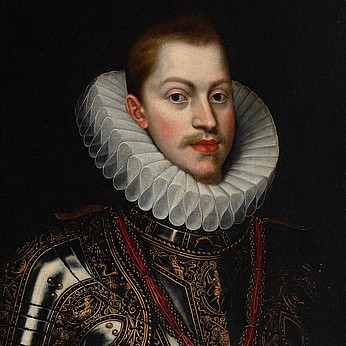Caravaggista school; late seventeenth century. "The arrest of Christ". Oil on canvas.
Lot 32
About Seller
Setdart Auction House
Carrer Aragó 346
Barcelona
Spain
Setdart Subastas was born in 2004 and is currently the first online art auction in Spain with solidity, prestige and reliability guaranteed by our more than 60,000 users. Setdart has a young, dynamic and enterprising team ready to successfully manage the purchase and sale of art works through custom...Read more
Estimate:
EUR€3,000 - EUR€3,500
$3,092.78 - $3,608.25
Absentee vs Live bid
Two ways to bid:
- Leave a max absentee bid and the platform will bid on your behalf up to your maximum bid during the live auction.
- Bid live during the auction and your bids will be submitted real-time to the auctioneer.
Bid Increments
| Price | Bid Increment |
|---|---|
| EUR€0 | EUR€10 |
| EUR€200 | EUR€25 |
| EUR€500 | EUR€50 |
| EUR€1,000 | EUR€100 |
| EUR€3,000 | EUR€200 |
| EUR€5,000 | EUR€500 |
| EUR€10,000 | EUR€1,000 |
| EUR€20,000 | EUR€2,000 |
| EUR€50,000 | EUR€5,000 |
About Auction
By Setdart Auction House
Nov 24, 2021
Set Reminder
2021-11-24 09:00:00
2021-11-24 09:00:00
America/New_York
Bidsquare
Bidsquare : Old Masters, Day 1
https://www.bidsquare.com/auctions/setdart-auction-house/old-masters-day-1-7873
Setdart Auction House sofia@setdart.com
Setdart Auction House sofia@setdart.com
- Lot Description
Caravaggista school; late seventeenth century. "The arrest of Christ". Oil on canvas. Possible signature on the back. It presents faults in the painting, repainting and slight restorations. Measurements: 43.5 x 32 cm; 53 x 41.5 cm (frame). In the darkness of the Mount of Olives, which is not appreciated in the scene, Jesus receives the kiss that consummates the betrayal of Judas. To portray this biblical scene, the author has placed Judas and Jesus in the center of the composition, clearly differentiating the figure of Jesus, by placing him facing the viewer as opposed to Judas who is giving the sword, and also resulting in the divine figure with a brighter color palette. Around the main figures, the artist has placed several soldiers in relation to the biblical text that describes a group of soldiers sent by the high priests of the Temple to capture Christ, Stylistically, the work shows a clear influence of Caravaggio and the followers of his style: theatrical use of a powerful spotlight, combination of this strong illumination with areas in darkness, use of diagonals, use of models inspired by the common people (although without the extraordinary realism of the Italian master in the present work because there is a greater degree of idealization in the faces), etc. Michelangelo Merisi da Caravaggio, known as Caravaggio, was an Italian painter, active in Rome, Naples, Malta and Sicily between 1593 and 1610. His painting combines a realistic observation of the human figure, both physically and emotionally, with a dramatic use of light, which exerted a decisive influence on the formation of Baroque painting. Caravaggio depicted close anatomical observation with a dramatic use of chiaroscuro that would come to be known as tenebrism. This technique became a dominant stylistic element, darkening shadows and transfiguring objects into brilliant beams of light. He vividly expressed crucial moments and scenes, often involving violent struggles, torture and death. He worked quickly with models from life, dispensing with sketches to work directly on canvas. His influence was profound in the new Baroque style that emerged from Mannerism and can be traced in the works of great masters such as Pedro Pablo Rubens, José de Ribera, Rembrandt and Diego Velázquez, as well as in countless artists of the following generation, who because they manifested his profound influence were called "Caravaggists" or "Tenebrists".
- Shipping Info
-
In-house shipping available. Please inquire at admin@setdart.com.
-
- Buyer's Premium



 EUR
EUR CAD
CAD AUD
AUD GBP
GBP MXN
MXN HKD
HKD CNY
CNY MYR
MYR SEK
SEK SGD
SGD CHF
CHF THB
THB

















